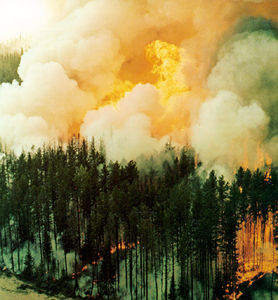Browse "Things"
-
Article
Food Poisoning
Food poisoning includes intoxication and infection resulting from consumption of foods contaminated by toxins (poisons) produced by specific micro-organisms, or the presence of infectious micro-organisms, heavy-metal contaminants (eg, copper) or natural toxins.
"https://development.thecanadianencyclopedia.ca/images/tce_placeholder.jpg?v=e9dca980c9bdb3aa11e832e7ea94f5d9" // resources/views/front/categories/view.blade.php
https://development.thecanadianencyclopedia.ca/images/tce_placeholder.jpg?v=e9dca980c9bdb3aa11e832e7ea94f5d9
-
Article
Football
For many years, the term football described the practice of kicking an object, usually a round ball, and directing it into a designated goal area.
"https://d2ttikhf7xbzbs.cloudfront.net/media/media/25011fea-a9f5-437d-aa54-0c61405baf46.jpg" // resources/views/front/categories/view.blade.php
https://d2ttikhf7xbzbs.cloudfront.net/media/media/25011fea-a9f5-437d-aa54-0c61405baf46.jpg
-
Article
Footwear Industry
Footwear industry, sector of Canada's MANUFACTURING industries that produces footwear to meet various needs, including specialized industrial footwear, functional footwear, cold-weather footwear, slippers, and dress, casual and athletic shoes for men, women and children.
"https://development.thecanadianencyclopedia.ca/images/tce_placeholder.jpg?v=e9dca980c9bdb3aa11e832e7ea94f5d9" // resources/views/front/categories/view.blade.php
https://development.thecanadianencyclopedia.ca/images/tce_placeholder.jpg?v=e9dca980c9bdb3aa11e832e7ea94f5d9
-
Article
Forage Crops
Forage refers to plants consumed by animals, particularly livestock. Forage may be preserved by drying the plants to produce hay, it may be fermented to produce silage, and dried material is also compressed to produce compacted hay, pellets, and cubes .
"https://d2ttikhf7xbzbs.cloudfront.net/media/Twitter_Cards/Saskatchewan storm.jpg" // resources/views/front/categories/view.blade.php
https://d2ttikhf7xbzbs.cloudfront.net/media/Twitter_Cards/Saskatchewan storm.jpg
-
Article
Forbidden City
William Bell’s historical novel Forbidden City (1990) tells the story of Alex, a teenager who accompanies his father on a trip to Beijing, China. Alex’s initial excitement at exploring the history of the city turns to horror when he becomes trapped near the Forbidden City during the Tiananmen Square Massacre. The most popular novel of Bell’s career, Forbidden City was published in 11 countries and eight languages. Reviewers praised its depiction of the on-the-ground reality of the Tiananmen Square Massacre. The novel received Ontario’s Ruth and Sylvia Schwartz Children’s Book Award, the Ontario School Librarians Association Award and the Belgium Award for Excellence.
"https://development.thecanadianencyclopedia.ca/images/tce_placeholder.jpg?v=e9dca980c9bdb3aa11e832e7ea94f5d9" // resources/views/front/categories/view.blade.php
https://development.thecanadianencyclopedia.ca/images/tce_placeholder.jpg?v=e9dca980c9bdb3aa11e832e7ea94f5d9
-
Article
Ford Case
In the Ford case (1988), the Supreme Court of Canada declared that sections 58 and 69 of the Charter of the French Language (Law 101), which required the exclusive use of French in commercial signs and the style of firm names, were incompatible with subsection 2(b) of the Canadian Charter of Rights and Freedoms and section 3 of the Québec Charter of Human Rights and Freedoms. Freedom of expression included the freedom to choose the...
"https://development.thecanadianencyclopedia.ca/images/tce_placeholder.jpg?v=e9dca980c9bdb3aa11e832e7ea94f5d9" // resources/views/front/categories/view.blade.php
https://development.thecanadianencyclopedia.ca/images/tce_placeholder.jpg?v=e9dca980c9bdb3aa11e832e7ea94f5d9
-
Article
Ford Motor Company of Canada Limited
Ford Motor Company of Canada, Limited, with head offices in Oakville, Ontario, is a major manufacturer and distributor of automobiles in Canada. First incorporated in Ontario in 1904, the Canadian company was reincorporated in 1911.
"https://development.thecanadianencyclopedia.ca/images/tce_placeholder.jpg?v=e9dca980c9bdb3aa11e832e7ea94f5d9" // resources/views/front/categories/view.blade.php
https://development.thecanadianencyclopedia.ca/images/tce_placeholder.jpg?v=e9dca980c9bdb3aa11e832e7ea94f5d9
-
Article
Foreign Aid
Foreign aid is assistance from rich, industrialized countries to poorer, developing countries. Since the 1950s Canada has been distributing cash, goods and services to poorer nations around the world. In 2012 the federal government's foreign aid spending totalled $5.67 billion (2.
"https://development.thecanadianencyclopedia.ca/images/tce_placeholder.jpg?v=e9dca980c9bdb3aa11e832e7ea94f5d9" // resources/views/front/categories/view.blade.php
https://development.thecanadianencyclopedia.ca/images/tce_placeholder.jpg?v=e9dca980c9bdb3aa11e832e7ea94f5d9
-
Article
Foreign Enlistment Act
The British, and later Canadian, Foreign Enlistment Acts prohibited service in foreign militaries and recruitment for those foreign militaries. Despite these legal prohibitions, Canadians have often served in large numbers in foreign militaries, such as 35,000 to 50,000 volunteers in the American Civil War, 1,700 volunteers in the Spanish Civil War, and more than 30,000 volunteers in the Vietnam War. Very few Canadians have been prosecuted for either foreign military service or recruiting, and all examples identified occurred during the American Civil War.
"https://d2ttikhf7xbzbs.cloudfront.net/Recruits_Wanted.jpg" // resources/views/front/categories/view.blade.php
https://d2ttikhf7xbzbs.cloudfront.net/Recruits_Wanted.jpg
-
Article
Foreign Investment
Foreign Investment in Canada is both direct (made to manage and control actual enterprises) and portfolio (made only for the interest or dividends paid, or the possible capital gain to be achieved). The amount of both types is very large, with the consequence that a considerable amount of the Canadian economy is controlled by foreigners.
"https://d2ttikhf7xbzbs.cloudfront.net/media/media/9fa24433-6f6c-44e9-8ef5-2d67ca55d4a9.jpg" // resources/views/front/categories/view.blade.php
https://d2ttikhf7xbzbs.cloudfront.net/media/media/9fa24433-6f6c-44e9-8ef5-2d67ca55d4a9.jpg
-
Article
Foreign Investment Review Agency
The Foreign Investment Review Agency was a federal agency formed by Parliament in 1973 as a result of concerns about foreign presence in the Canadian economy.
"https://development.thecanadianencyclopedia.ca/images/tce_placeholder.jpg?v=e9dca980c9bdb3aa11e832e7ea94f5d9" // resources/views/front/categories/view.blade.php
https://development.thecanadianencyclopedia.ca/images/tce_placeholder.jpg?v=e9dca980c9bdb3aa11e832e7ea94f5d9
-
"https://development.thecanadianencyclopedia.ca/images/tce_placeholder.jpg?v=e9dca980c9bdb3aa11e832e7ea94f5d9" // resources/views/front/categories/view.blade.php
https://development.thecanadianencyclopedia.ca/images/tce_placeholder.jpg?v=e9dca980c9bdb3aa11e832e7ea94f5d9
-
Article
Forest
A forest is an ecosystem characterized by a dense and extensive tree cover. It includes not only trees but also shrubs, vines, herbs, mosses, microorganisms, insects, and vertebrate animals that interact with each other and with their environment. This complex pattern of life is a system in delicate balance. Natural or human-caused alterations may trigger far-reaching and sometimes disastrous changes.
"https://d2ttikhf7xbzbs.cloudfront.net/forest/Spruce-Forest-in-Winter.jpg" // resources/views/front/categories/view.blade.php
https://d2ttikhf7xbzbs.cloudfront.net/forest/Spruce-Forest-in-Winter.jpg
-
Article
Forest Economics
Container seedlings such as this white spruce are grown in greenhouses and planted in March or June (courtesy Alberta Forest Service).Forest Economics FOREST economics is the application of economic principles to a wide range of subjects extending from management of the various forest resources through the processing, marketing and consumption of forest products. Forest economics has much in common with AGRICULTURAL ECONOMICS, but although the latter discipline has an established academic history in Canada, no...
"https://development.thecanadianencyclopedia.ca/images/tce_placeholder.jpg?v=e9dca980c9bdb3aa11e832e7ea94f5d9" // resources/views/front/categories/view.blade.php
https://development.thecanadianencyclopedia.ca/images/tce_placeholder.jpg?v=e9dca980c9bdb3aa11e832e7ea94f5d9
-
Article
Forest Fires in Canada
A forest fire is a moving combustion reaction, spreading outwards in a band from its ignition point, leaving burned-out forest behind it. On average, about 6,000 forest fires occur annually in Canada.
"https://d2ttikhf7xbzbs.cloudfront.net/media/media/645e8e08-17c5-4cc5-8a68-b25c913f441c.jpg" // resources/views/front/categories/view.blade.php
https://d2ttikhf7xbzbs.cloudfront.net/media/media/645e8e08-17c5-4cc5-8a68-b25c913f441c.jpg
